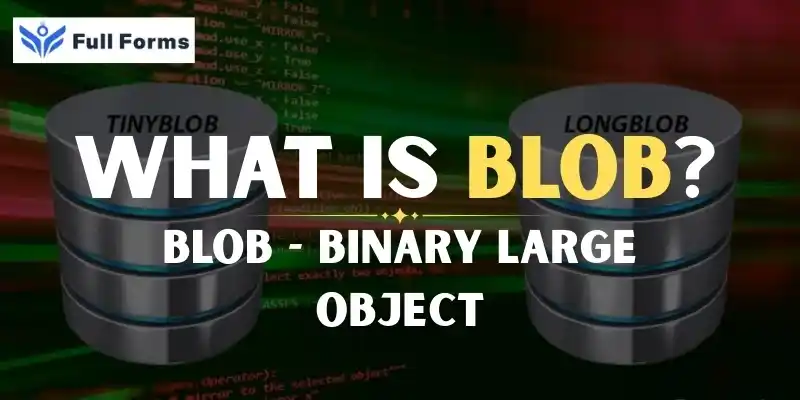Binary Large Object
(BLOB)

Description
Binary Large Object (BLOB): Defining Its Significance
You most often hear talk of various types of data on computers, within databases: text, numbers, pictures. But do you hear the data referred to as a ‘BLOB’? Short for Binary Large Object, it’s a major asset for storing more complex and un-plain text-based data.
The word BLOB is an acronym for Binary Large Object. Okay, so that’s cool enough or ridiculous jargon but what does a BLOB do, or where is one likely to encounter it and what should be expected in return from using one?
What does BLOB mean?
A BLOB is storing much information on a computer system or in a database. All kinds of binary data can be kept in BLOBs, which means data that the computer can use directly: images, videos, sounds, and even whole software programs. This is what’s different from simple data such as numbers or text.
BLOB stands for “big chunk of data stored as it is,” which means data without any interpretation.
Why Use BLOBs?
Most databases are created to store information in the form of text or numbers – names, dates, prices. However, modern applications often have a need to save ‘complicated’ data such as:
- Pictures or photographs
- Audio or music files
- Video clips
- Files like PDFs or Word documents
It’s not so easy to keep them as text because these files are binary, not plain text. That’s why most databases use BLOBs to be able to store and manage such things in the form of files.
Where do people use BLOBs?
BLOBs are used by many people in many applications like:
- Websites
In their databases, websites store BLOBs of user profile pictures or videos. Presumably, when you upload a picture to your social media profile, it gets saved as a BLOB. - Applications for multimedia
BLOBs are used by applications such as music players, and streaming videos to save files of audio and video. - Systems for managing documents
Businesses can keep contracts, scanned documents, or reports as BLOBs and they get the file they need precisely when needed. - Databases
MySQL, Oracle, SQL Server have special data types that can deal with BLOBs.
What Do BLOBs Do?
When you save a BLOB, you save it as a collection of bytes, which are the smallest unit of data in a computer. The database views the BLOB as one thing but does not see what is inside it and so does not try to read or modify it.
When at a later time you want to have the BLOB back, the system reads it as it had been saved. This will allow you to display pictures, play video, or open the file.
Different kinds of BLOBs
So, we can conclude that different databases may maintain support for different types and sizes of BLOBs:
- TINYBLOB: very small binary files
- BLOB: common binary objects
- MEDIUMBLOB: binary data that is medium-sized
- LONGBLOB: big binary objects, can be several gigabytes in size
Which one you use will depend on how big your files are.
Benefits of Using BLOBs
- You can almost store any kind of data.
- Management is easy if the entire associated data (data and images in this case) is in one database.
- Security: If kept in databases with BLOBs, files may be more secure than if kept in file systems.
- BLOB data is included in database backups automatically, simplifying data management.
There are costs to using BLOBs:
- Performance: Retrieving large BLOBs can slow down the system.
- Simple: BLOBs are binary large things, and because the database does not know what is contained in them, it becomes quite a task to handle and even search for them within the database.
- Many databases limit the size of BLOBs.
How a Database Uses BLOB in Real Life
Consider an application database for a photo viewing application. Each and every picture would then be saved as BLOB.
PhotoID, PhotoName, and PhotoData (BLOB)
- beach.jpg (binary data of the picture)
- sunset.png (binary data of the picture)
The app reads the binary data from the BLOB column and displays the image when someone requests to view “beach.jpg.”
What distinguishes BLOB from other types of data?
BLOB differs from text or number fields in that it stores raw binary data. Whereas text fields contain characters that one can read, BLOBs contain data in bytes identically as it is.
Inference:
Binary Large Object or BLOB is an impractical way to store complex data in databases, such as videos, images, or any other files in modern applications that deal with media in various forms. The handling of BLOBs can really be unwieldy sometimes. But, they are a very secure and flexible way to handle your digital content.
So, you know what BLOBs are, but you might not even realize that they’re there or what they are doing the next time you upload a picture or play a song on your device!
